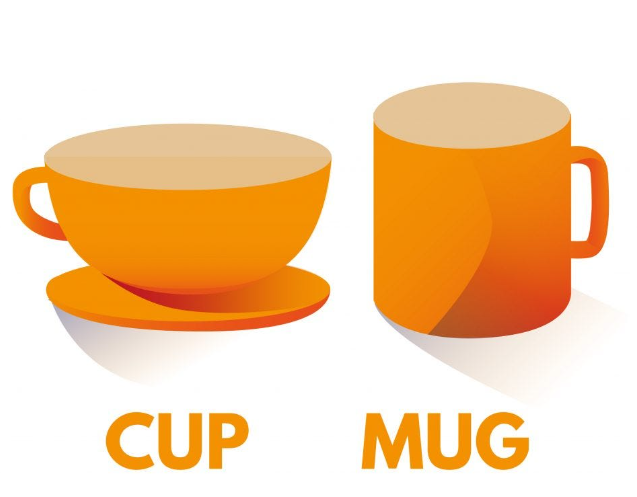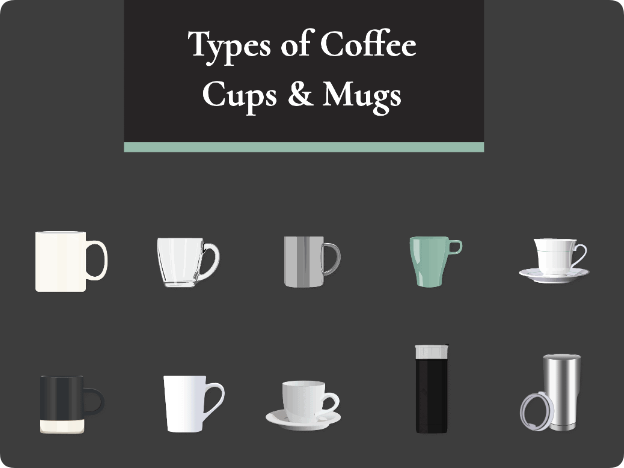When sourcing drinkware for your business, especially from a ceramics manufacturer like EKA Ceramic, understanding the differences between mugs and tea cups is crucial. Both serve different purposes, have different designs, and are targeted towards different consumer preferences. Whether you are buying for retail, corporate gifts, or the hospitality industry, knowing which product best suits your market needs can significantly impact your purchasing decisions.
In this article, we will cover the following key points:
Table of Contents
- 1. Definitions and Uses of Mugs vs. Tea Cups
- 2. Design and Material Considerations
- 3. Market Trends and Popularity of Each
- 4. Pros and Cons of Mugs vs. Tea Cups for B2B Procurement
- 5. How to Choose the Right Drinkware for Your Business
- 6. Procurement Advice: Packaging, Customization, and Sourcing
- Conclusion: Which Should You Choose?
Let’s dive into these areas to help you make an informed choice for your business.
1. Definitions and Uses of Mugs vs. Tea Cups

Mugs
A mug is a large, sturdy container for hot beverages, usually with a handle. Mugs are typically used for coffee, tea, hot chocolate, or even soups. In B2B settings, mugs are highly popular for their versatility and broad market appeal. Mugs tend to have a larger capacity, making them suitable for casual or everyday use.
- Common Uses: Coffee shops, corporate branding, promotional gifts, hotels
- Typical Size: 8-16 oz
Tea Cups
Tea cups, on the other hand, are smaller and more delicate in design, often paired with a matching saucer. They are traditionally used for tea drinking and often found in formal settings such as afternoon teas or upscale restaurants.
- Common Uses: Tea rooms, high-end restaurants, luxury hotels, gift sets
- Typical Size: 4-8 oz
2. Design and Material Considerations

Mugs VS Tea Cups Design
One of the key differences between mugs and tea cups lies in their design and materials. This has an impact not only on the aesthetics but also on the durability, usability, and pricing—factors that matter in B2B procurement.
| Feature | Mugs | Tea Cups |
|---|---|---|
| Capacity | Larger, usually 8-16 oz | Smaller, usually 4-8 oz |
| Handle Design | Sturdy, thick handle | Delicate, often thinner handle |
| Material | Ceramic, porcelain, stainless steel | Fine porcelain, bone china |
| Durability | Highly durable | More fragile, requires careful handling |
| Accompanying Items | Rarely comes with saucer | Typically paired with saucer |
| Customization Options | Wide range for branding and logo | Less space for branding, often decorative |
Mugs VS Tea Cups Material
Most mugs are made from ceramic or stoneware, offering a durable and affordable solution for mass use. Some premium options include bone china or porcelain mugs, especially for corporate gifting.
Tea cups, especially in high-end settings, are made from finer materials like porcelain or bone china. This gives them a lighter, more refined feel but also makes them more fragile.
3. Market Trends and Popularity of Each
When it comes to market demand, both mugs and tea cups have distinct buyer profiles.
Mugs: A Universal Favorite
Mugs are far more versatile and can appeal to a wide range of consumers. Whether you’re looking to stock coffee shops or offer personalized mugs as corporate gifts, mugs provide an excellent canvas for customization and branding. In the past decade, mugs with unique shapes, colors, and personalized prints have been in high demand, particularly for e-commerce sellers and retail chains.
Tea Cups: The Luxurious Option
Tea cups, while more niche, have an enduring appeal in luxury markets. Tea rooms, high-end hotels, and specialty gift shops are always in the market for elegant tea sets. Tea cups paired with saucers make them an ideal candidate for gift sets, often seen during the holiday season or in boutique retail environments.
Cup and mug: what’s the difference?
4. Pros and Cons of Mugs vs. Tea Cups for B2B Procurement
As a B2B purchaser, it’s important to consider not only the product but also the overall cost, logistics, and the potential market demand for each. Here’s a breakdown of the pros and cons of mugs and tea cups from a procurement perspective:
| Factor | Mugs | Tea Cups |
|---|---|---|
| Customization | Easy to print logos, broad surface | Limited customization space |
| Durability | Highly durable, especially ceramic | More fragile, especially in porcelain |
| Cost | Lower production and shipping costs | Higher cost, more fragile |
| Market Appeal | Mass-market appeal | Niche, high-end markets |
| Packaging Needs | Simple packaging | Requires extra care, usually gift-wrapped |
| Logistics | Easier to ship in bulk | Higher risk of breakage during shipping |
Mugs VS Tea Cups Key Takeaways:
- Mugs are great for businesses looking for versatile, easy-to-brand, and durable products with mass appeal.
- Tea cups cater to niche markets, requiring careful handling but offering a luxurious, high-end product that stands out in specialized sectors.
5. How to Choose the Right Drinkware for Your Business
Consider Your Target Market
- If you’re supplying cafes or offices, mugs are the ideal choice. Their durability, large capacity, and ease of customization make them the go-to option for everyday use.
- For luxury hotels, gift shops, or tea rooms, tea cups provide a more refined and elegant option. The pairing with saucers and finer materials also make them a more luxurious offering.
Match Product to Purpose
- For corporate gifts or promotional items, mugs offer more space for branding and customization. They can be easily tailored to include logos, slogans, and other company-specific designs.
- For gifting sets or high-end retail, tea cups are more appealing, especially when presented in elegant, decorative packaging.
Sustainability and Material Sourcing
If eco-friendliness is a priority, it’s worth considering the materials used. Ceramic mugs and tea cups are generally sustainable as they are made from natural materials and can be recycled. Some manufacturers, including EKA Ceramic, are also moving toward more sustainable production processes by minimizing waste and energy use in manufacturing.
6. Procurement Advice: Packaging, Customization, and Sourcing
Packaging Considerations
Mugs, due to their sturdiness, require simpler packaging. They can be packed in bulk with minimal risk of breakage. However, tea cups, especially those made from finer materials like porcelain, need more secure and often decorative packaging, particularly if they are sold as part of a set with saucers.
Customization Options
Mugs offer a larger surface area for branding, making them ideal for logos, designs, or even full-wrap prints. Tea cups, while offering less space for branding, can still be customized with intricate patterns, often on both the cup and the saucer.
Bulk Purchasing and Sourcing
For large-scale buyers, working with a manufacturer like EKA Ceramic can provide several advantages. You can source both mugs and tea cups in bulk, take advantage of competitive pricing, and customize orders to meet your brand’s specific needs.
EKA Ceramic specializes in providing B2B clients with a variety of drinkware options, ensuring that both mugs and tea cups meet your quality standards, whether you’re targeting a mass market or a niche luxury audience.
Conclusion: Which Should You Choose?
In summary, the decision between mugs and tea cups comes down to your target market and the purpose of your purchase. Mugs are versatile, durable, and easy to customize, making them the perfect choice for most everyday uses and mass-market appeal. Tea cups, while more niche, offer a touch of luxury and are ideal for high-end retail, tea rooms, and elegant gifting options.
For businesses looking to purchase in bulk, partnering with a manufacturer like EKA Ceramic ensures access to high-quality, customizable mugs and tea cups that meet both functional and aesthetic requirements.
When choosing between the two, consider not only the immediate needs of your customers but also the long-term trends and market potential. Both mugs and tea cups have their place in the world of drinkware, and sourcing the right product can set your business apart in a competitive marketplace.

